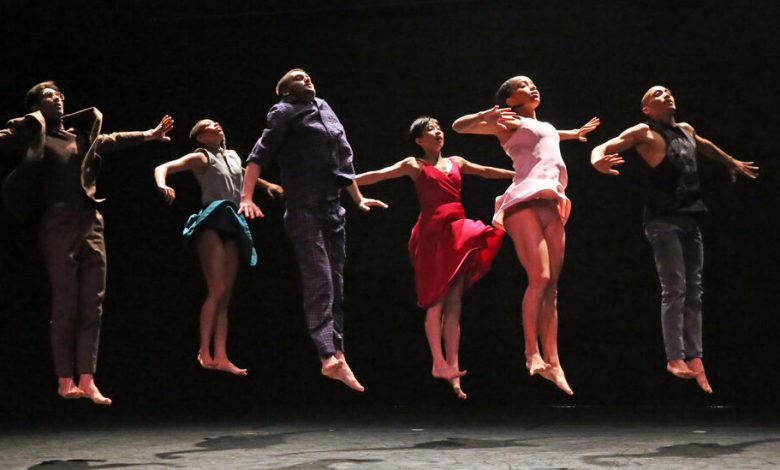Review: Gibney Dances Ohad Naharin, Minus the Inner Drive

Since its recent windfall and reinvention, the Gibney Company has been busy creating and presenting mixed bills of new work. One critical take on these efforts is that the choreography hasn’t served the talent and skill of the young, well-trained dancers. But in Gibney’s current program at New York Live Arts, the problem is closer to the reverse.
There is only one work on the bill, an older one, “Yag,” which the highly influential choreographer Ohad Naharin created for Batsheva Dance Company in 1996. While not exactly a repertory staple, this 50-minute piece is not obscure either. L.A. Dance Project toured a version of it a few years ago, and Naharin himself created an excellent film of it in 2020.
It is classic Naharin: bursts of uninhibited motion and eccentric gestures framed by various theatrical gambits. In the most frequently recurring motif, one dancer after another tells us her name and the names of her relatives, some of whom are dead, and then recalls that her family once really, really loved to dance.
Gibney calls its version “Yag 2022,” but the main update seems to be the standard one of using the actual names of people in the cast. Since the dancers also say that they are one another’s sisters, brothers, wives, husbands or grandfathers, this use of real names creates an interesting metafictional tension, suggestive of how a dance company is and is not like a family. Near the beginning and at the end, the dancers pose as if for a family photo.
The Gibney dancers — at least Tuesday’s opening night cast, which alternates with another — deliver these monologues flatly. Not anti-naturalistically, just stiltedly, dully. And this flatness extends throughout most of the performance. The specific, characterful choreography is all there, executed capably. But the effect is of an empty shell.
This deficiency is an illuminating demonstration of how much stage presence matters in Naharin’s work. Batsheva dancers always have presence: a self-assured directness that borders on arrogance. If they are going to stand and stare at the audience or place fortune cookies in a line on the floor and slowly crush them underfoot in a procession — both happen in “Yag” — their manner dares you not to find this activity compelling, while also communicating that if you don’t, it’s your loss.
The Gibney dancers lack this quality. Whenever the work breaks into motion, they jump at the chance to exercise their abilities, hurling their lithe bodies in multiple directions. The performers (Miriam Gittens in particular) find some of the beauty in quieter moments, like a balletic section set to Elizabethan lute. And they sometimes hint at the love of dancing in a pelvis-rocking bit or a little kick-to-the-side step, matched with a techno track, that could be a TikTok move.
But even in their solos, there isn’t much character. Jie-Hung Connie Shiau accesses some of her role’s orneriness, as she pushes Jesse Obremski around, takes and puts on all his clothes (down to his glasses), and then stands on a door that’s on top of his naked body. Yet that doesn’t make up for the general blandness. And without the enlivening charisma, “Yag” essentially falls apart, becoming a mere grab bag of gimmicks, unconvincingly eccentric.
Before the lights go down, the dancers pose for their second family photo, this time with Obremski’s character in the buff. The idea is that something has been exposed, and it has. But, in this performance, not what Naharin intended.
Gibney Company
Through Saturday at New York Live Arts; newyorklivearts.org.




